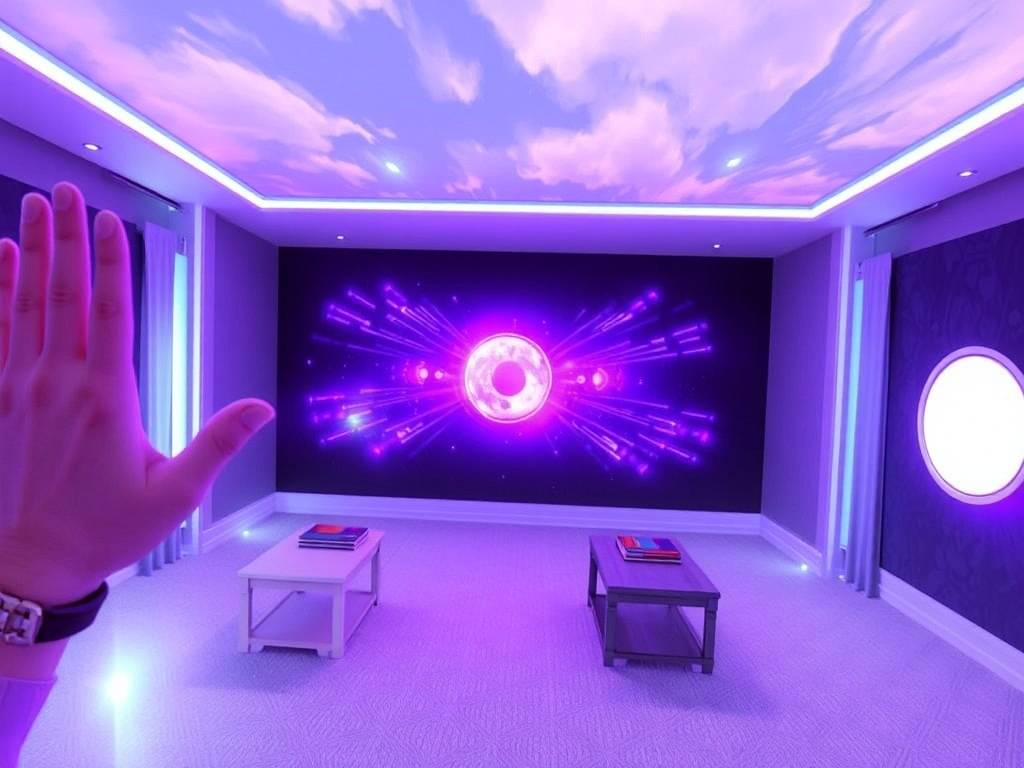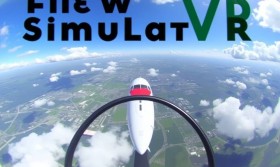The Dawn of Hope: How Optimism Simulator VR's 'Hope Missions' Expansion is Re-Wiring Minds
In an era increasingly defined by digital saturation, existential anxieties, and global uncertainty, the quest for mental well-being has moved from the therapist's couch to the cutting edge of technology. Virtual Reality, once a playground for gamers, is rapidly evolving into a potent therapeutic tool. Leading this paradigm shift is a groundbreaking application known as Optimism Simulator VR, a title designed not to escape reality, but to better equip users to face it. Its latest and most profound update, the "Hope Missions Expansion," is more than just new content; it's a meticulously crafted journey into the neural pathways of resilience, offering a revolutionary approach to building lasting psychological strength.
Beyond Positivity: The Science of Active Hope

Traditional self-help often preaches passive positivity—the repetition of affirmations in the mirror. Optimism Simulator VR operates on a different principle, rooted in cognitive behavioral therapy (CBT) and neuroplasticity. It understands that hope is not a passive emotion but a dynamic cognitive process. It's a verb. The Hope Missions Expansion is built on this active framework, structured around three core pillars: Agency (the belief that one can influence events), Pathways (the ability to identify multiple routes to a goal), and Optimism (the expectation that good things will happen).
The expansion presents users with a series of narrative-driven "Missions," each a self-contained experience targeting a specific aspect of hopeful thinking. This isn't about slaying dragons or solving puzzles; the challenges are emotional and psychological.
A Glimpse into the Hope Missions
-
The Architect of Pathways: In this mission, users find themselves in a surreal, crumbling bridge extending into a foggy abyss. The goal is not to cross, but to build. Scattered in the environment are glowing, modular pieces. Using intuitive motion controls, users must construct multiple new pathways forward. The VR experience masterfully translates the abstract cognitive process of "finding alternatives" into a tangible, physical action. When one path proves unstable, the user learns to calmly deconstruct it and try another, directly reinforcing the neural concept that there is never just one way forward.
-
The Grove of Gratitude: This mission is a serene, interactive meditation. Users enter a tranquil, bioluminescent forest where the trees appear wilted and dim. The narrative guide prompts them to recall specific, personal moments of gratitude, connection, or kindness. As they vocalize or mentally focus on each memory, a corresponding tree in the grove blossoms with light and vitality, filling the space with a soft hum and warmth. This mission leverages the proven psychological benefits of gratitude, using immersive visual and auditory feedback to create a powerful associative memory, making the practice feel impactful and rewarding.
-
The Summit of Agency: This mission is designed to combat feelings of helplessness. Users start at the base of a daunting, storm-swept mountain. The wind howls, and the path is obscured. Their tool is a "Focus Lantern," a light whose intensity is directly controlled by their breathing (measured via biofeedback sensors in the VR headset or a connected wearable). By practicing calm, diaphragmatic breathing, the user strengthens the light, which not only illuminates the next handhold but also pushes back the virtual wind. This creates a direct, visceral feedback loop: your physiological calm (within your agency) directly alters and improves your challenging environment. You literally push back the storm with your own regulated breath.
The Technology of Transformation
The genius of the Hope Missions lies in its seamless integration of technology and psychology.

- Biofeedback Integration: By linking in-game events to heart rate variability (HRV) and breathing patterns, the software makes abstract psychological states tangible. You don't just think you are calming down; you see your calmness having a immediate effect on your world.
- Embodied Cognition: VR’s power comes from embodiment. By "physically" building pathways or "pushing back" a storm, users aren't just learning concepts; they are building muscle memory for hope. The brain encodes these experiences more deeply than it would from reading or listening.
- Personalized Narrative: The AI-driven narrative adapts subtly to user choices and progress. The memories recalled in the Grove are your own. The challenges on the Summit reflect your personal stress triggers, making the experience uniquely relevant.
The Ripple Effect: From Virtual Hope to Real-World Resilience
The ultimate goal of the Hope Missions is not mastery within the game. It's transferable skill acquisition. The techniques practiced in VR—cognitive reframing, gratitude journaling, breath-focused calm—are designed to become default mental patterns in the real world. A user facing a dead-end at work might unconsciously recall the feeling of building a new pathway in VR. Someone feeling overwhelmed by bad news might instinctively take a deep breath to "push back the storm."
Early clinical trials are promising, showing significant post-experience increases on standardized measures of hope and reductions in anxiety symptoms. Users report a greater sense of control and a enhanced ability to generate solutions to personal problems.
The Hope Missions Expansion for Optimism Simulator VR represents a bold new frontier in digital wellness. It moves beyond meditation and mindfulness into active, participatory psychological training. It proves that technology, often blamed for our anxiety, can be expertly harnessed as its antidote. By allowing us to literally practice hope in a safe, controlled, and stunningly beautiful environment, it provides a blueprint for building the resilience we so desperately need, one virtual mission at a time. It’s not a simulator for a better virtual life; it’s a training ground for a better, more hopeful reality.
Tags: #VirtualReality #MentalHealthTech #VRTherapy #OptimismSimulator #HopeMissions #DigitalWellbeing #Neuroplasticity #TechForGood #ResilienceTraining #PositivePsychology #VRGaming #InnovationInHealthcare #FutureOfTherapy #EmbodiedCognition


















